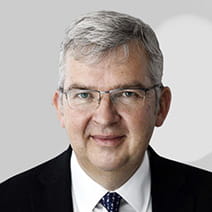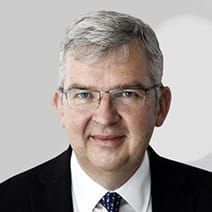- Markets mostly directionless but S&P 500 and Nikkei notable performers; bond markets fall slightly on interest rate uncertainties
- UK equities reverse April gains with c.5% fall in May
- Central banks in Europe and UK continue to raise rates, albeit less aggressively
- Rating lowered on high yield bonds, increased on cash and European smaller companies
Global financial markets in May were mostly directionless. The S&P 500 and Nikkei were the notable positives, with the latter reaching a 33-year high, but other equity regions were flat to slightly negative. UK equities gave up the gains they made in April by falling c.5% in May. Bond markets were slightly negative on ongoing interest rate fears as uncertainty dragged on regarding how far central banks were likely to raise interest rates.
The most significant news was the periodic political standoff regarding the US debt ceiling. However, market fears were eased by the end of the month when the House of Representatives passed the required bill.
Rate hikes in the US and Europe continued, albeit less aggressively. The Federal Reserve, the Bank of England and the European Central Bank each hiked by a quarter-point.
Mixed signals in US
The Fed’s hike was its tenth in just over a year, bringing it to its highest target range since 2007. Chairman Jay Powell hinted that rate hikes could be paused soon, while the IMF still warned that the US will need to keep interest rates ‘higher for longer’ to get inflation back to its target. New data showed that US headline CPI fell to 4.9% for April, beating expectations that it would remain steady at 5.0%, but core inflation remained stubbornly high, dipping only slightly to 5.5%.
The signals continued to be mixed around the US economy. The Q1 US GDP figure was revised up to 1.3% from an initial estimate of 1.1%, which was attributed to strong spending from consumers and federal and local government, while US unemployment claims were near historic lows, bolstering fears of more rate hikes to come and putting further pressure on US bonds. Yet the rate of large US companies filing for bankruptcy rose to eight in May versus an average of three a month in 2022, reflecting the wider credit tightening squeeze, and a measure of US consumer confidence fell to its lowest level so far this year.
Rating lowered on high yield bonds
Despite the recent elevated volatility within bond markets, one fixed income fund manager noted that high yield credit continues to exhibit resilient fundamentals – including a near-zero default rate, high recovery rates, declining leverage, and improved liquidity. He said: “The market also contains some of the highest interest coverage ratios we have seen in more than a decade. When the risk-free rate and credit spreads reach levels such as those observed today, we have historically seen strong one-year forward returns in the high yield asset class. This year’s jump in yields has meant this buffer is back again, providing investors with a powerful compounding effect.”
Another fixed income fund manager said: “Last year was all about interest rates and inflation but so far, 2023 has been all about credit differentiation. Credit will matter much more. To date, we have had a rates sell-off, not a credit sell-off.
“Defaults this year have been at record lows. Stripping out Russia and Ukraine, they’ve been at about 0.5%. That leaves only one way to go. That said, the average balance sheet is better quality than in recent history and we don’t expect a significant spike like that seen in the Global Financial Crisis, but defaults will pick up from here. We expect a rate of 3-4% in the UK, and 2-3% in Europe.”
We lowered our ranking on high yield bonds in our Q2 tactical asset allocation review to neutral, having raised it in Q4 2022. We added exposure to high yield investments at an opportune time, when they had attractive spreads versus government bonds but these have since narrowed and we have taken some profits but remain constructive on the long term prospects for the asset class.
More positive on European smaller companies
In Europe, encouraging data that showed German inflation was cooling to 4.1% in April versus 6.7% in March helped the DAX index to reach a record high. The DAX has seen double-digit performance so far this year on strong industrial earnings. However, the European Central Bank still raised its benchmark deposit rate to 3.25% and warned of more hikes this year.
We are now more positive on European smaller companies, albeit still neutral. Concerns over Europe’s domestic economy are abating as the region continues to progress after the problems associated with gas supplies from Russia due to the war in Ukraine.
The UK’s headline inflation fell to 8.7% in April from 10.1% in March but it was still above the Bank of England’s forecast of 8.4%. Core inflation jumped from 6.2% in March to 6.8%. Fears of further rate hikes being needed pushed gilt yields to levels close to those seen in last year’s mini-Budget crisis. Data also showed that UK GDP remained in positive territory in Q1 and the BoE said it no longer expected a recession lasting throughout 2023 and into Q1 2024.
One UK equities fund manager said it had been a reassuring Q1 earnings season. He added: “The more economic sensitive businesses such as the recruiters and consumer discretionary have seen a slowdown. But then to some degree that was already reflected in their valuations, so the share price reactions have been OK in those names. The valuations of those businesses are interesting for long-term investors who can see through the cycle.”
US-China tensions easing
In Asia, the Nikkei hit a 33-year high as stronger-than-expected GDP data showed that Japan’s economy grew in Q1 by an annualised 1.6%, beating expectations of 0.7%. It was the first rise in three quarters, thanks to a post-Covid recovery in household spending. But poor manufacturing activity data undermined hopes for a swift recovery in China following its Covid lockdown.
There was encouraging news regarding US-China tensions. At the end of the G7 summit in Japan, president Biden predicted a thaw in US-China relations and later in the month, US and Chinese trade officials met at an Asia-Pacific Economic Cooperation conference in Detroit to stabilise economic ties.
A fund manager pointed out the risks and challenges of investing in Asia: “The challenges in the region are sentiment swings and retail participation, although those can both also represent opportunities. Some markets in the region are not as institutionalised as the more developed markets.
“China, for example, has very high retail participation, and so its market can be very sentiment driven from time to time, in both positive and negative directions. That's a challenge, but it can also be an opportunity when things go your way.”
Market sentiment is still on a tightrope, thanks to inflation not going down as quickly as investors would like but the general situation not being so bad either. Inflation remains persistent but arguably we are through the worst of it and economies are making steady progress. In our most recent tactical asset allocation review, we raised our outlook on cash, but this had more to do with rising interest rates making it a better store of value rather than a negative outlook on markets. Overall, we are still seeing the underlying tone gather momentum in markets that have clocked up two quarters of growth and a positive start to 2023.
KEY RISKS
Past performance is not a guide to future performance. The value of an investment and the income generated from it can fall as well as rise and is not guaranteed. You may get back less than you originally invested.
The issue of units/shares in Liontrust Funds may be subject to an initial charge, which will have an impact on the realisable value of the investment, particularly in the short term. Investments should always be considered as long term.
Some of the Funds and Model Portfolios managed by the Multi-Asset Team have exposure to foreign currencies and may be subject to fluctuations in value due to movements in exchange rates. The majority of the Funds and Model Portfolios invest in Fixed Income securities indirectly through collective investment schemes. The value of fixed income securities will fall if the issuer is unable to repay its debt or has its credit rating reduced. Generally, the higher the perceived credit risk of the issuer, the higher the rate of interest. Bond markets may be subject to reduced liquidity. Some Funds may have exposure to property via collective investment schemes. Property funds may be more difficult to value objectively so may be incorrectly priced, and may at times be harder to sell. This could lead to reduced liquidity in the Fund. Some Funds and Model Portfolios also invest in non-mainstream (alternative) assets indirectly through collective investment schemes. During periods of stressed market conditions non-mainstream (alternative) assets may be difficult to sell at a fair price, which may cause prices to fluctuate more sharply.
DISCLAIMER
This is a marketing communication. Before making an investment, you should read the relevant Prospectus and the Key Investor Information Document (KIID), which provide full product details including investment charges and risks. These documents can be obtained, free of charge, from www.liontrust.co.uk or direct from Liontrust. Always research your own investments. If you are not a professional investor please consult a regulated financial adviser regarding the suitability of such an investment for you and your personal circumstances.
This should not be construed as advice for investment in any product or security mentioned, an offer to buy or sell units/shares of Funds mentioned, or a solicitation to purchase securities in any company or investment product. Examples of stocks are provided for general information only to demonstrate our investment philosophy. The investment being promoted is for units in a fund, not directly in the underlying assets. It contains information and analysis that is believed to be accurate at the time of publication, but is subject to change without notice. Whilst care has been taken in compiling the content of this document, no representation or warranty, express or implied, is made by Liontrust as to its accuracy or completeness, including for external sources (which may have been used) which have not been verified. It should not be copied, forwarded, reproduced, divulged or otherwise distributed in any form whether by way of fax, email, oral or otherwise, in whole or in part without the express and prior written consent of Liontrust.







